Basal Cell Carcinoma
What is basal cell carcinoma?
A type of skin cancer called basal cell carcinoma (BCC) starts in the basal cells. The epidermis is made up of healthy basal cells. They are the skin cells that get rid of old ones and make room for new ones. When basal cells get cancer, growths show up on the surface of the skin. Most of the time, these tumours look like sores, bumps, growths, scars, or red patches.
Even though BCC almost never spreads (metastasizes) to other parts of the body, it can still make a person look different. In very rare cases, it can spread to other parts of the body. If it does, it could become dangerous to your life.
BCC is the type of skin cancer that happens most often. Every year, about 4 million cases in the United States are diagnosed with it.
What are the symptoms of basal cell carcinoma?
Almost all basal cell carcinomas happen on parts of the body that get a lot of sun. Tumors can form on the face, the ears, the shoulders, the neck, the scalp, and the arms. Tumors can sometimes grow in places that don’t get much sunlight.
Most of the time, BCCs don’t hurt. The only sign is that the skin grows or changes how it looks. BCC comes in different forms. Each of them looks different:
- Pigmented BCC looks like a brown, blue, or black spot with a border that is often clear and raised.
- Superficial BCC: This kind looks like a red patch on the skin that is usually flat and scaly. It keeps getting bigger and sometimes has a raised edge. It often looks like this when it’s on the back or chest.
- Nonulcerative BCC looks like a white, pink, or skin-colored bump on the skin. It’s often see-through, so you can see the blood vessels underneath. This type of BCC is the most common. Most of the time it shows up on the neck, ears, and face. It can break, bleed, and get a scab.
- Morpheaform BCC: This is the type of BCC that is used the least. It usually looks like a scar-like lesion that is white and waxy and has no clear edge. This kind of cancer can be a sign of a type of BCC that spreads quickly and is more likely to be disfiguring.
- Basosquamous BCC: This type of skin cancer is like both basal cell carcinoma and squamous cell carcinoma. It is very rare, but it spreads to other parts of the body more often than other types of skin cancer.
What causes basal cell carcinoma?
Most skin cancers, like BCC, are caused by long-term exposure to the sun or ultraviolet (UV) light. These cancers can also be caused by intense exposure a few times a year, which usually leads to a sunburn.
In rarer cases, BCC can be caused by other things. These things are:
- exposure to radiation
- exposure to arsenic
- complications from scars, infections, vaccinations, tattoos, and burns
- chronic inflammatory skin conditions
There is a high chance that BCC will come back after it has been found.
What are the risk factors of basal cell carcinoma?
There are a number of things that can make it more likely that you will get BCC. Some of these danger signs are:
- having a family history of BCC
- having light skin
- having skin that freckles or burns easily
- having inherited syndromes that cause skin cancer, like disorders of the skin, nervous system, or endocrine glands
- having fair skin, red or blonde hair, or light-colored eyes
- being a man
There are other risk factors that don’t involve genes. These things are:
- age, with increased age correlating with increased risk
- chronic sun exposure
- severe sunburn, especially during childhood
- living in a higher altitude or sunny location
- exposure to radiation therapy
- exposure to arsenic
- taking immunosuppressing drugs, especially after a transplant surgery
How is basal cell carcinoma diagnosed?
A dermatologist will first look at the area to see if it looks like BCC. They will look at your skin from head to toe for any growths or changes. They will also ask about your health history, such as if anyone in your family has had skin cancer.
If your dermatologist sees any spots or growths that worry them, they will take a sample of your skin to test. To do this, they will inject a numbing agent into the skin before taking a small piece of the lesion for testing. Under a microscope, the biopsy will be looked at to see if there is skin cancer.
If BCC is found, your doctor will cut off the growth. If you have an aggressive form of BCC, your doctor may take a sample of cells from one of your lymph nodes to see if the cancer has spread.
How is basal cell carcinoma treated?
Basal cell carcinoma is treated by cutting out the growth. Your doctor will tell you how to treat your BCC based on the type of BCC you have, how big the lesion is, and where it is. Some options for treatment are:
Curettage and electrodessication
A curette is used to scrape off the growth during this process. An electrocautery needle is then used to burn the tumour. It works very well, especially on small spots, but it might not work as well on aggressive BCCs or high-risk spots. It can leave a white scar that is round. This method works 95 percent of the time.
Excisional surgery
Your doctor will use a scalpel to cut out the tumour and a small amount of healthy skin around it. For this procedure, the surgical site needs to be closed with stitches. This is often used for BCCs that are getting worse and could hurt the skin around them. There might be a small scar. This method works 95 percent of the time.
Mohs micrographic surgery
Your doctor will cut away a thin layer of tissue that covers the tumour. After freezing the layer of tissue, a map is made of it using a microscope. The doctor will then do the same thing again in the exact spot where the cancer was.
This procedure has the highest cure rate, at about 99 percent, and can save healthy tissue. It is often used for large tumours or tumours in places like the face or neck that are easy to see.
Cryosurgery
Cancers that are thin and don’t go deep into the skin are treated with cryosurgery. With liquid nitrogen, your doctor can freeze and kill cancerous cells. This could damage nerves at the site, which could make it hard to feel.
Even though there is no need to cut, anaesthesia may be used. The growth will start to blister or harden. Most of the time, cryosurgery is used to treat BCC and people who have trouble stopping bleeding. The number of times it works is between 85 and 90 percent.
Recovering from treatment
Most treatments for BCC are small and easy to get over. As the surgery or cut heals, a lot of people will feel some pain there.
Scars are a common side effect of treatment for BCC. Follow the after-care instructions your doctor gives you to make scars look less bad. Among these instructions are:
- Keep the area where the cut was clean.
- Apply over-the-counter ointments like Vaseline and Neosporin multiple times a day to help it heal, and keep it covered with a bandage.
- Don’t let the wound dry out. It will get better with this
There is a high chance that BCC will come back. Take care to keep your skin from getting too much sun.
Can basal cell carcinoma cause complications?
The most common problem with basal cell carcinoma is that it comes back. Even after successful treatment, BCCs often come back. Sometimes, BCC may show up again in the same spot. It can also make you look ugly, especially if you don’t get it treated right away.
If you have BCC, you are more likely to get other types of skin cancer. This includes melanoma, the most dangerous type of skin cancer because it can spread to other parts of the body.
Rare and aggressive types of BCC can spread to other parts of the body. Bone, nerves, and muscles can all be hurt by it. In rare cases, it can spread to other parts of the body, including vital organs, and kill the person.
Is basal cell carcinoma preventable?
The best way to avoid BCC is to avoid or limit your exposure to UV light. Don’t go out in the sun when it’s brightest, and don’t use tanning beds.
Even if you’re only going to be outside for a few minutes, you should always put on sunscreen. Use a sunblock with an SPF of 15 or more. To protect yourself from the sun, you can also wear light clothes and hats. The only exception is babies. When possible, babies should not be out in the sun. Don’t put sunscreen on babies younger than six months old.
When BCC is found early, scarring from removing a tumour is less likely to happen. Get checked for skin cancer once a year by a dermatologist or your regular doctor. You should also check your skin from head to toe every month. If you see any changes in your skin, you should see a doctor.



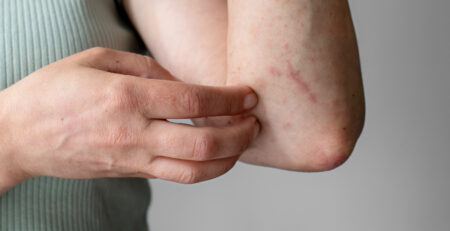
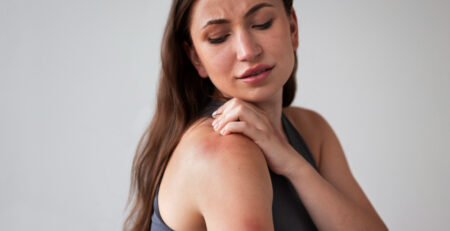
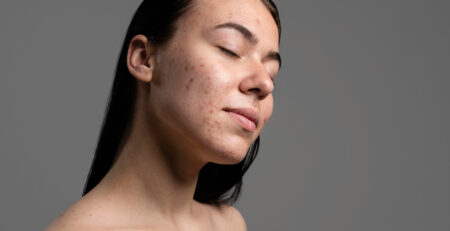

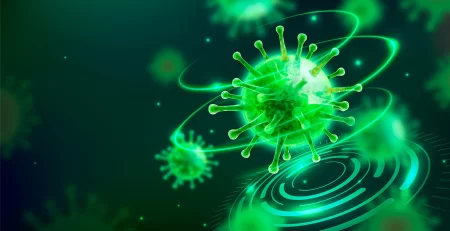
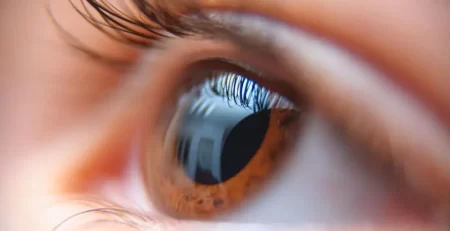
Leave a Reply